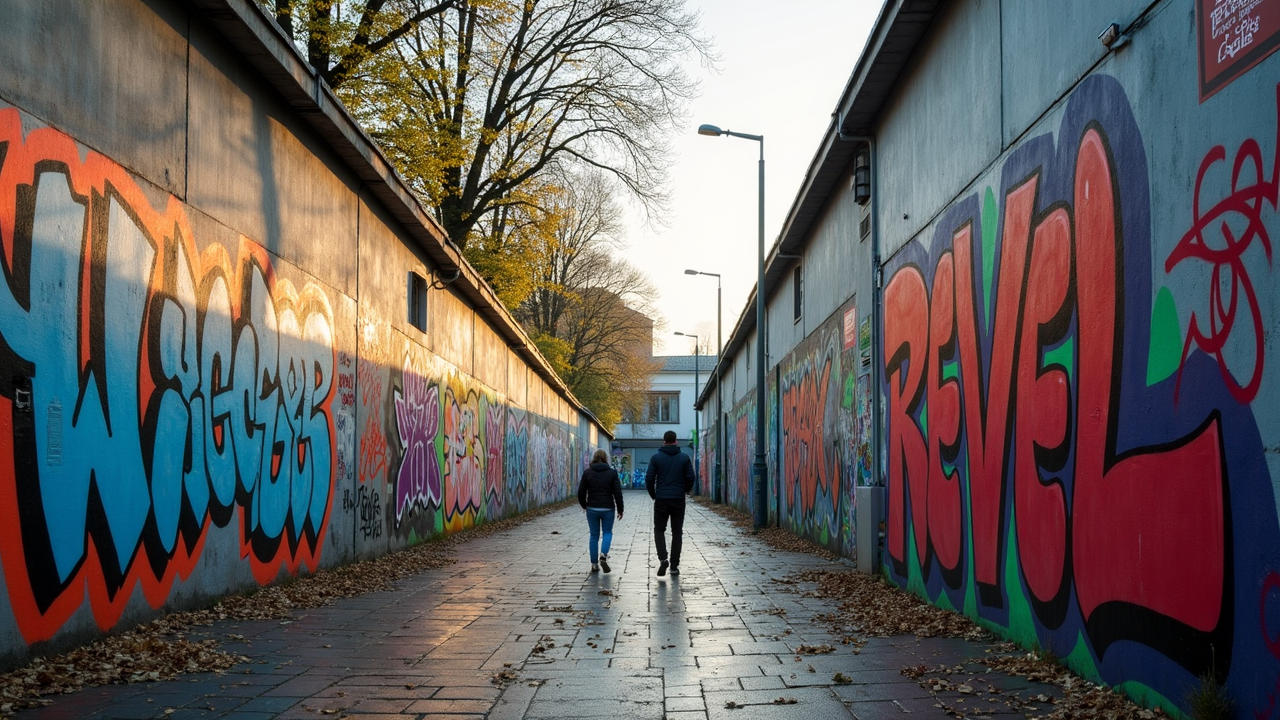Exploring the Vibrant Street Art Scene in Berlin
Berlin is a city that pulses with creativity, rebellion, and cultural expression. Among the many ways the city showcases its personality, street art stands out as a powerful and ever-changing canvas reflecting its history, social issues, and youthful spirit. If you’re an art lover, urban explorer, or just curious about the city’s colorful walls, Berlin offers an experience like no other.
Understanding the Roots of Berlin’s Street Art Scene
Berlin’s street art scene has deep roots intertwined with the city’s complex history. After the fall of the Berlin Wall in 1989, the city became a symbol of freedom and new beginnings. This period of transition gave rise to an explosion of creativity, with empty walls and abandoned buildings becoming the canvases for artists eager to express themselves.
The rebellious spirit that defined the divided city continued to thrive in reunified Berlin. Street art emerged as a form of protest against political oppression and social injustice, often reflecting the struggles of East and West Berliners. Over time, what started as guerrilla tagging evolved into sophisticated murals and large-scale installations, turning Berlin into a magnet for urban artists.
Key Neighborhoods for Street Art Exploration
Kreuzberg: The Heart of Urban Art
Kreuzberg is perhaps the most famous neighborhood for street art in Berlin. Its bohemian vibe, diverse community, and history of counterculture make it a haven for graffiti and murals. Wandering through its streets, you’ll encounter an array of colorful murals, stencil artwork, and spontaneous installations. The area around the Kottbusser Tor and Schlesische Straße often features prominent artworks that blend political messages with artistic flair.
Friedrichshain: The Canvas of Creativity
Adjacent to Kreuzberg, Friedrichshain boasts a rugged charm with plenty of wall space for artists. The East Side Gallery, a section of the Berlin Wall preserved as an open-air gallery, is perhaps the most iconic piece of street art in the city. This 1.3 km stretch showcases murals painted by artists from around the world, symbolizing peace, freedom, and hope.
Neukölln and Mitte: Emerging Hotspots
These neighborhoods are gaining recognition for their dynamic street art scenes. Neukölln offers murals that reflect its multicultural identity, while Mitte, close to the city center, features more polished and commissioned art projects, blending history with modernity.
Notable Artworks and Artists
The East Side Gallery is home to murals by renowned artists like Kani Alavi and Birain. One of the most famous murals is the “My God, Help Me to Survive This Deadly Love,” contributed by Russian artists, depicting the tension of the Cold War era.
In Kreuzberg, works by local artists such as NMS (Niels Meulmann) and Blu can be seen adorning walls, blending social commentary with artistic innovation. Blu, an Italian graffiti artist, is famous for his large-scale murals that transform public spaces into vibrant storytelling canvases.
Tips for Exploring Berlin’s Street Art
Plan Your Route
Start with a guided street art tour, which many local companies offer. This ensures you don’t miss the best murals and learn the stories behind them.
Visit Notable Locations
Don’t miss the East Side Gallery, the Raw-Gelände (an old factory turned art space), and the Walls of Kreuzberg. These sites offer a mix of historical and contemporary street art.
Timing is Key
Best times to explore are during spring and early fall when the weather is mild, allowing for comfortable walking and outdoor photography. Keep in mind that street art is often created spontaneously, so part of the thrill is discovering new pieces during your walks.
Respect the Art
While Berlin’s street art is largely open and inviting, always respect private property and avoid damaging artworks. Many artists rely on public expression, so viewing with respect is appreciated.
How Street Art Shapes Urban Culture
Berlin’s street art isn’t just decorative; it’s a form of social commentary and activism. It challenges perceptions, questions authority, and fosters a sense of community. The city’s murals often serve as a visual diary of its societal issues—from migration and inequality to political resistance.
Moreover, street art has become an integral part of Berlin’s tourism and economy. Tourists flock to see its murals, supporting local artists and creative spaces. The city’s openness to new art forms continues to attract talented artists from around the world, fueling a vibrant urban art scene.
Conclusion
Berlin’s street art scene is a living, breathing part of its urban identity. Whether you’re admiring massive murals on the Berlin Wall or discovering hidden gems in side streets, each piece tells a story of resilience, diversity, and change. So, grab your camera, lace up your walking shoes, and immerse yourself in Berlin’s colorful, rebellious spirit. This city’s walls await your discovery.

Leave a Reply